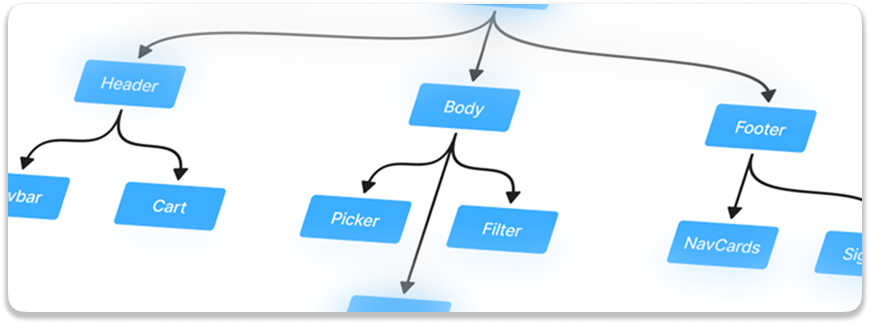Core Concepts
Dioxus is a Rust framework for building cross-platform apps with a single codebase. Every app leverages a user interface (UI) to display content and allow the user to take action. The UI is built from small units like buttons, text, and images and then organized into components that encapsulate functionality. Dioxus apps are built by combining components into a larger interactive tree.

With Dioxus, you simply declare what you want your app to look like, and the lightweight Dioxus runtime ensures your widgets render properly across web, desktop, and mobile.
A high-level overview
Dioxus builds upon decades of UI research. Constructing interactive, beautiful, and efficient user interfaces can be challenging. We designed Dioxus to address the complexity of frontend development with a simple mental model:
- User Interfaces are constructed declaratively to describe the layout and style of widgets
- The state of the application is stored in small, composable, functions called "hooks"
- Modifications to state are performed as a response to user interaction which result in a "re-render"
Manually creating and modifying UI elements can be tedious and error prone. The declarative UI approach Dioxus uses requires some training to master, but ultimately it results in efficient and easy-to-maintain frontend code. We recommend thoroughly walking through the Core Concepts to understand how the Dioxus UI and reactivity model works.
Table of Contents
In the Core Concepts, we cover three important topics:
- Building User Interfaces: Constructing a UI by assembling text, elements, and components.
- The Basics: Making our UI interactive, responsive, and efficient.
- Advanced: Reactivity in depth, the Component Life-cycle, breaking out of dioxus, and more.
We also cover two additional topics which aren't necessarily essential to UI development, but are still essential to building great apps:
- App Routing: Adding multiple screens and routes for the users to visit.
- Fullstack: Integrating backend services, server-side-rendering, remote-procedure-calls, and more.